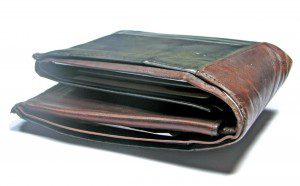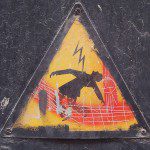
Radial Shockwave Treatment – What you should know
Radial Shockwave Therapy in Edmonton, Spruce Grove, Sherwood Park and St. Albert is becoming one of the most commonly advertised treatments for pain. At Leading Edge Physiotherapy, we understand that patients are bombarded daily with convincing, medically-worded advertising about the latest, greatest cures for their pain. Research on the internet further complicates matters as patients try to sort out fact from bias. Here are some facts about Radial Shockwave Therapy as we know it.
So How Long Has It Been Used?
RSWT (Radial ShockWave Therapy) has been around since the mid 1980s in Europe, but it was not common here until the last two decades likely due to the exorbitant costs of the technology. Shockwaves were developed in a medical environment originally to treat kidney stones. At Leading Edge Physiotherapy we invested in our state-of-the-art Swiss Dolorclast technology in 2008 because we knew the benefits to our clients outweighed our cost. One of our certified therapists has been using the technology for over 15 years. This technology continues to be some of the most advanced and *researched in the industry.
(E)SWT – what does the E mean
Extracorporeal – the term simply means occurring or originating outside of the body. Simply put, the shockwave originates outside the body and is transmitted into the tissue from there.
So what is “Shockwave” Therapy? 
To some, I am sure that the term shock conjures thoughts of putting your finger in a socket. In the case of radial shockwave, it is not an electrical shock that is generated. In fact, a shockwave is a physically generated sound wave that occurs when an object reaches the speed of sound. These shockwaves can occur in nature such as when a jet plane flies overhead or after lightning strikes. Not to gross anyone out, but observations of these shockwaves occurred as far back as the second World War. At that time, castaways swimming in the water suffered significant lung damage when water bombs were detonated in a wider radius. The impact of the shockwaves caused lungs to tear without any visible damage on the outside.**
Shockwaves are defined as “transient pressure oscillations that propagate in three dimensions and typically bring about a clear increase in pressure within a very short time.” In most units used in medicine, such maximum pressure is reached within a few nanoseconds. I won’t nerd out too much, but there is a rapid rising positive pressure impulse with a tension phase of negative pressure. If it takes too long to achieve that maximum pressure, then the wave may be defined as a pressure wave.
We utilize technology with a compressor and applicator to generate the shockwave and transmit the sound wave using water soluble gel into scarred and/or calcified soft tissue. The application of this shockwave for MSK conditions has been well researched over the last 15 years.
Is there such a thing as “Real” or “True” Shockwaves
Yes, but only for branding or marketing. A shockwave is a shockwave as defined above period. There are different delivery mechanisms, intensity, focal/radial applications and treatment parameters. Beware of certain claims. While experience, technology and treatment parameters make a difference, calling something better can be misleading without the context of the injury or condition. For instance, Lithotripsy is effective for kidney stones, Focal Shockwave may be effective for ED and radial shockwave has extensive research for the treatment of the vast majority of tendon pathologies.
Unfortunately, our tissues do not remain young and healthy forever.
RSWT is a well-researched, effective treatment for conditions that are chronic (>3 months) and have been otherwise resistant to common therapies. These include: Plantar Fasciitis, Achilles tendonitis and thickening, Epicondylitis (tennis and golfer’s elbow), Patellar tendonitis (jumper’s knee) and Calcific tendonitis of the Rotator Cuff in the shoulder. It is also very effective for hallux limitus associated with painful bunions, though it will not cure the structural defect of bunions. In keeping with the research and providing evidence based use of this treatment, we have utilized this treatment for chronic low back pain, sacroiliac pain and osteoarthritis in the knees. We have seen the benefits correlating to the research findings in this area as well.
When conservative treatments have failed and surgery seems like your only option, RSWT may help you. In our modest clinics alone, we have managed to help many people avoid surgery and its invasive risks and possible complications.
How does it work?
The exact mechanism of shockwave therapy remains unknown. Based on results from studies performed by ***Dr. Ching-Jen Wang, it appears that the radial shockwaves’ physical energy cause a biological response with increased metabolic activity around the site of the tissue damage and pain. In contrast to lithotripsy in which the shockwaves disintegrate therenal stones, radial shockwaves do not destroy tissue, rather they microscopically cause interstitial and extracellular responses which induce a healing effect. Specifically, the shockwaves were shown to stimulate the early expression of angiogenesis related growth factors including eNOS (endothelial nitric oxide synthase), VEGF (vessel endothelial growth factor) and PCNA (proliferating cell nuclear antigen), which then induces the ingrowth of neovascularization. Okay, I nerded out again but essentially, this improves blood supply and increases cell proliferation and eventual tissue regeneration to repair the tendon or bone tissues.
The treatment also induces an analgesic effect. This mechanism is theorized to occur as a result of an initial rise in concentration of substance P in the zone of the shockwave with a subsequent prolonged reduction in its total concentration. This may explain the initial pain response followed by prolonged analgesia.
How many treatments does it take?
Most conditions require three to five treatments, spaced out once per week. Many people begin to feel some relief during that period, however healing occurs over the next 12 weeks and the best results are felt after this period of time. Occasionally, stubborn conditions require a fourth or fifth session to achieve optimal results.
I heard that the treatment is expensive
As is the case with all technology, costs come down over time. We are committed to using this technology to care for as many patients as we can and only on those who would benefit from its healing properties. This is the reason that we offer RSWT as a part of our comprehensive physiotherapy management for $130 per treatment. In 2008 when I started providing RSWT the cost of three initial treatments was $875. Compared to traditional treatments which can carry on for months, radial shockwave is utilized 3 to 6 times and therefor the total cost can be quite similar.
and only on those who would benefit from its healing properties. This is the reason that we offer RSWT as a part of our comprehensive physiotherapy management for $130 per treatment. In 2008 when I started providing RSWT the cost of three initial treatments was $875. Compared to traditional treatments which can carry on for months, radial shockwave is utilized 3 to 6 times and therefor the total cost can be quite similar.
Many people self-diagnose, research possible treatments online, and make care decisions based on biased or incomplete information. The most important part of any treatment plan is that it is based on an accurate assessment and diagnosis: the right treatment, for the right condition, at the right time. Might I add, that it should also be provided by the right professional. At Leading Edge all of our treatments are provided by registered physical therapists who are able to accurately diagnose your injury prior to the treatment. The treatment plan follows the diagnosis.
Radial Shockwave Therapy may be the answer for your chronic pain…but it might not be. Let us help you make an informed choice. Beware of any provider who claims they are the “answer” to your chronic pain. It is simply not as simple as they might wish you to believe, even if they say that it “ends here”.
*The Evidence
Simply click here to begin your journey into peer reviewed SwissDolorclast Research
**Krause H: Physik und Technik medizinishcer Stosswellensysteme. In Rompe JD (ed). Extrakorporale Stosswellentherapie. Weinheim, Chapman and Hall, 15-34, 1997.


I am 87 years of age and excellent health for my age, except for my legs. I have arthritis in my left knee, with some resulting pain, and stiffness in both knees. Standing up after being seated for even a few minutes is difficult, and, as a result of my leg problems, my balance is a bit precarious. I wonder if RSWT would help.